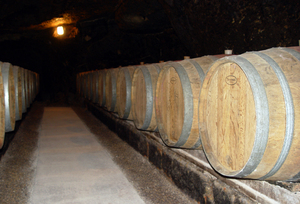Hershey’s and Dove chocolate are two very well known types of chocolate. These delicious morsels are the result of a long, pain-staking process.
While soil characteristics vary drastically among locations of cocoa farms, the plantations are usually located where the drainage moderates the wet and dry climate seasons. The soil must also not be acidic or made of alkaline. The climate must be a mix between humidity and heat (meaning not Elkton, Maryland ) and must not directly be exposed to light. Tropical climates are the ideal locations. They are planted under canopies and in shade.
Besides location, other factors pay into the finishing product. Cocoa has to be properly to get the end result of fine chocolate. Good chocolate is made from beans from cocoa pods that are just ripe. Under ripe pods have low cocoa butter content and over ripe pods may contain microbes. Both affect the fermentation process and damage chocolate flavor.
After the harvest, the pods are opened to get the grains out and the sticky white pulp (mucilage) that surrounds them. Farmers ferment the cocoa within a week of harvesting, although it is ideal to ferment immediately after shelling. The five to eight day process transforms the seeds/grains from the shell into ‘stabilized’ beans, ready for the chocolate maker to use. The pulp disappears completely, leaving only the fermented seeds. The seeds are then dried and become known as ‘beans’, ready to leave for the chocolate factory.
Poor fermentation can have serious consequences. If fermentation stops completely, the beans will be ‘slaty’ and unable to produce quality chocolate. Short fermentation prevents flavor precursors developing and bitterness and astringency reducing. Too much fermentation develops undesirable flavor characteristics, or ‘off-flavors’, when the beans are roasted.
When the beans are done fermenting they have a moisture content of about 50-60. Drying the beans reduces it down to about 7. There are two types of drying, sun drying (the beans are spread out in the open air, on racks or directly on the ground) and artificial drying (beans are dried in special drying units designed to provide heat and ventilation).
Finally the beans are stored in climate controlled environments because growing regions are commonly many thousands of miles from chocolate making facilities. Then the beans get sent to some places where the chocolate is made.
Roasting is the crucial stage in the chocolate making processes. There are several roasting processes. Pre-roasting is when he cocoa beans are quickly heated with hot air or infra-red radiant heaters to separate the shells from the ‘nibs’, or bean meat. The beans are roasted at temperatures between 100’Æ”’°C (212’Æ”’°F) and 150’Æ”’°C (300’Æ”’°F) for between twenty and forty minutes. Direct roasting is when the beans, still in their shells, are roasted and then shelled all at once. This older and more traditional method allows the flavor to develop properly. As a guide, this type of roasting is carried out at between 150’Æ”’°C and 160’Æ”’°C (300’Æ”’°F-320’Æ”’°F) for forty to fifty minutes.
During or after roasting, the beans are shelled. For the best quality chocolate, as little shell should be left as possible. There are three stages of shelling; the roasted, shelled and crushed beans are milled to reduce them to even finer particles. It is important to take care when milling: friction generated heat can cause smoky or burnt off-flavors and some of the already existing flavors can be damaged or lost.), refining converts the milled particles into liquid cocoa mass created as the cocoa butter in the beans binds the dry particles, and conching involves powerful machines, ‘conches’, stirring the chocolate in a controlled way. Conching is usually done is two stages, dry conching; the chocolate is slowly stirred at a temperature of around 80’Æ”’°C (175’Æ”’°F) to rid it of any residual moisture and add viscosity, liquid conching; follows immediately after dry conching – in the same conch and without stopping the machine – affecting texture and creaminess.
Tempering is where they take the liquid to semi-liquid chocolate into solid. It is a very delicate process. The chocolate is heated to a specific temperature until the cocoa butter crystals have melted completely, and then cooling it at a carefully selected temperature. Properly tempered chocolate is smooth and glossy, snaps when broken and produces smooth texture in the mouth and delivers flavor and aroma. When carried out with patience, attention to detail and love, the chocolate making process will produce truly gourmet chocolate.
Author/Artist: Schmidt, Wayne
Page Title: How Chocolate Is Made
Site Title: Wayne’s This and That
Author/Artist: Forristal, Linda Joyce
Page Title: Chocolate
Site Title: Questia







